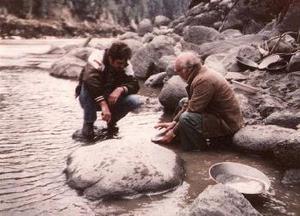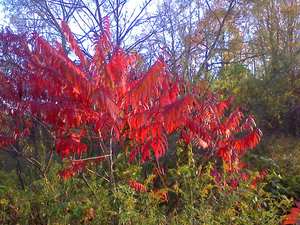Gold fever has struck many a soul and once you’ve been bitten, it’s hard to cure without gold in your pan. Panning for gold has helped build the world as we now it and has now become a hobby for those who yearn for the old west way of life. Bonanzas have been replaced by highly technical and economically efficient mining operations, but with a whole lot of heart and a bit of luck, the cure for the fever may not be far from reach.
Basic gold panning requires only two fundamental necessities, a gold pan and a gold bearing water source. Creeks, rivers, and streams across the United States contain gold, from California to Georgia, but gold rich seams may be few and far between. Modern bonanzas are rare, especially for the weekend prospector, but that certainly doesn’t mean you can’t have fun chasing the original American dream.
Necessary Equipment
If you are lucky enough to live in a gold bearing state than half the battle has been won already. Historically gold rich states still produce gold and continue to produce gold, although not on the scale we read about in history books. Finding a water source that contains gold is the first and most important step in panning for gold. Research where gold has been found in the past by visiting museums, reading history books about the location you’re interested in, asking around, or searching the internet.
Once a gold bearing water source has been found, obtaining the necessary tools becomes secondary. At the very least a gold pan is required. They come in many shapes and sizes, but they all serve the same general purpose. Modern pans are generally made of a plastic compound, with variations in diameter, color, and riffles setting them apart. For the beginner most pans will suffice, however the pan must be seasoned before use. To season a new pan, simply take some sand or fine grit sand paper, and rub the pan in a circular motion making sure to season the riffles as well. This scuffs the surface allowing for better gold recovery.
Additional items that will help with gold recovery include a classifier, which sorts out larger rocks allowing only smaller material to enter your pan, a shovel to get material out of the creek bed, and a snuffer bottle, which sucks up and stores any gold that you may find.
Finding Gold
After doing a little bit of research to find a gold bearing water source, it’s time to gather your equipment and get out there! Gold is 18 times heavier than water meaning it has a tendency of settling in areas of the creek with low water pressure. Often times this means behind large boulders, downstream from rapids, or in sand bars. For the novice prospector, sand bars are a good place to start since they are generally easily accessible and don’t require specialized equipment to extract any gold they may contain.
Seasonal water cycles replenish the gold in sand bars yearly, as the spring flood waters move gold downstream and relocate it to sand bars. Often nuggets and larger pieces of gold are in deeper waters, but plenty of fine (or float) gold can be found in sand bars. Small gold has a tendency of settling on the inside curves of a creaks bend and is often a good place to start the hunt. If you’re not near a gold bearing water source, bags of pay dirt can be purchased online to practice panning.
Panning
Once a prospective sand bar has been found and all the necessary equipment has been gathered, it’s time to start prospecting. If you have a classifier, place it on top of your gold pan and shovel material into it. Placing the pan and classifier in or near the creaks bank will help to classify the material. Splash some water on the material and agitate both the pan and classifier in a circular motion, repeating this action until all of the smaller material has fallen into the pan. The larger rocks can then be dumped out.
Now that all of the smaller material is in your pan, remove the classifier and agitate the pan at a flat angle with all of the material submerged in water so that the heavier material (gold) will fall to the bottom. The key is to loosen the material, without losing any out of the sides. Some people prefer a swirling motion and others go side to side. Each technique works and it is merely a personal preference, the key is to loosen the material so that the gold will fall to the bottom.
For novices, working with less material makes the process easier until good technique has been mastered. With the pan well agitated, lighter material can now be removed. If your pan has riffles, which most do, hold the opposite end of the pan up at a slight angle and submerge the riffled side in water. Move it back and forth, allowing the water to wash away the top layer of lighter material over the edge of the pan. Be sure to not let too much material escape, or you may lose gold as well.
After the top layer of material has been removed, agitate the pan at a flat angle again to allow the gold to settle to the bottom. Then repeat the angled back and forth motion, removing the next layer of material. Continue to repeat this cycle removing layer by layer until only black sand and gold remain in the pan. The first few pans will take time until a good rhythm and technique is developed. It’s helpful to know that most of the heavier materials are darker in color, so when you start to see dark material, it’s time to agitate the pan again.
If you’re lucky there will be some gold at the bottom of your pan. The snuffer bottle works like a suction device and is a helpful tool to remove the fine gold from your pan. They’re cheap and available at most retailers that carry pans.
You’re not likely to strike it rich using these basic prospecting tools, but for little investment you can still chase the gold rush and maybe find a little gold of your own. Prospecting is a great way to get outside and enjoy the outdoors. There are many resources available to those new to prospecting and many experienced prospectors are more than willing to share their knowledge. Have fun and good luck!


